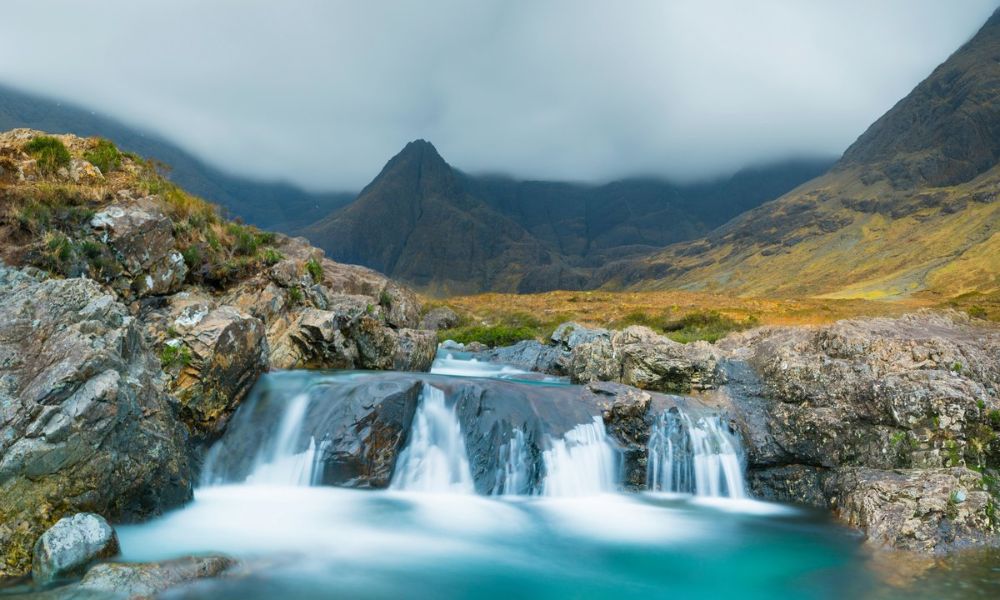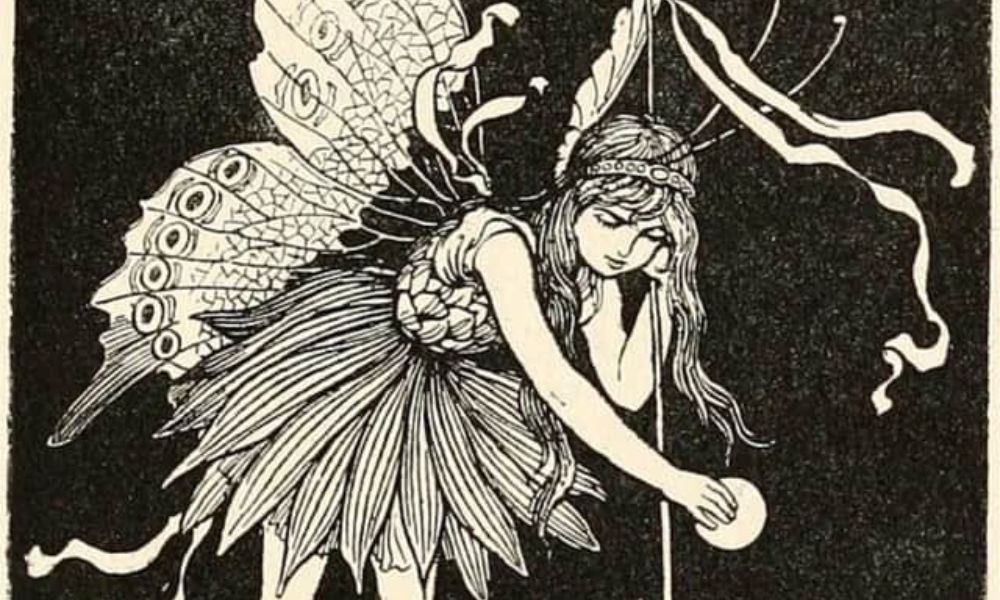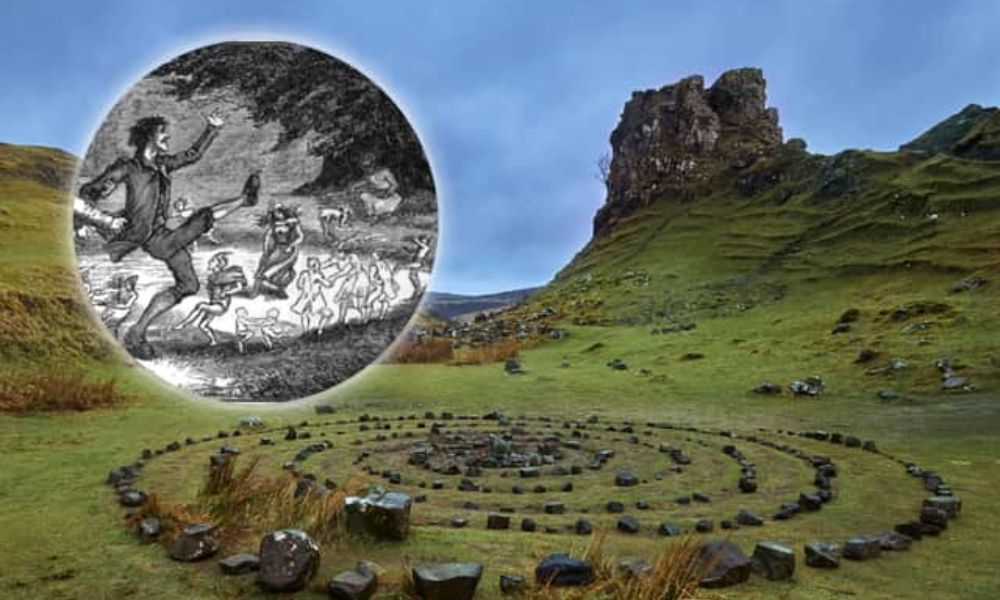Posted by Maris on 28th Feb 2024
Isle of Skye Fairy Pools Guide: Why are the fairy pools so named? Scots folklore explained
With good reason, the Isle of Skye is a popular tourist destination in Scotland; it resembles a scene from a fairy tale. One gets the impression of entering a new universe because of the stunning munros, waterfalls, and castles that are scattered throughout. Having said that, there might be some validity to this regarding the fairy pools on the island.
Nestled in the center of Glen Brittle, one of Skye's must-see places, these sparkling crystal clear pools of teal and turquoise hues draw thousands of visitors each year, including swimmers who dare to venture into its chilly waters. In a similar vein, fairies, who are common mythical figures in Scottish tradition, are reported to flit past and take a dip in the ponds.
Although most people are familiar with the term "wee folk" from Outlander, which is a Scots term for "little people," not many people are aware of Scotland's two "factions" of fairies—one of which is good and the other evil, which is known to kidnap and murder young people.
Here's an overview of Scotland's fairy pools and what you should know about them so you can learn more about the fascinating history and folklore around them.
What are the fairy ponds consist of?

"The Fairy Pools are beautiful rock pools of translucent mountain spring water fed by a series of waterfalls," according to Dunvegan Castle. They are located on Allt Coir' a' 'Mhadaidh, which translates to "burn of the wolf" in Scottish Gaelic, our mother dialect.
It's worth mentioning that the Gaelic term for "wolf" can be translated as "mac-tíre," meaning "son of the land." This illustrates the ancient Scots' strong bond with the natural world.
Similar to many other lochs in Scotland, the pools are well-liked by hikers and outdoor enthusiasts who are drawn to them by the breathtaking surroundings, which include the towering Cuillin mountain range.
In what location are they? The Fairy Pools on the Isle of Skye are 1.5 miles from the Fairy Pools parking lot at Glenbrittle.

Why are they called fairy pools?

While there are fairy tales throughout in Scotland, the Fairy Flag legend of Dunvegan Castle, which is connected to the Fairy Pools, is particularly common in Skye. According to legend, the chieftain of Clan Macleod of Dunvegan was to wed a princess of the Shining Folk, or fairies, a "bean sidhe" (fairy woman).
The King of the Fairies prohibited their marriage even though they were in love, which grieved his daughter. He responded by approving their union—but only as a trial, for a year only. After a year together, the Fairy Princess was ordered to return to her home realm, even though she had given birth to a son.
One night, distraught, she heard her baby crying in the realm of humans. Without delay, she went back to him, covered him with a silk shawl, and sang him to sleep. The story is called the "Fairy Flag" for this reason.
This mythology has several variations, and it explains why you can find several fairy place names strewn around a Scottish map of the Isle of Skye, particularly the area around Dunvegan. Another creature from Scottish mythology, selkies, are said to frequent the ponds, according to the Nomads Travel Guide.
Seals that lose their watery skins to become people are known as selkies. It is supposed that they would travel to the beach at the base of Glen Brittle on the isle, and then make their way to the fairy pools, where they would have a bath in the glow of the full moon.
Scottish fairies, sometimes known as "Wee folk" or "Sidh," explained

Known as "síth" in Gaelic or "Wee" or "Guid folk" (little or good) in Scots, many old Scottish customs, such as Halloween and Lammas Day, have their origins in rituals meant to fend off demonic spirits, such as fairies.
According to our tradition, these beings can take on a multitude of forms and possess a range of temperaments, displaying either kindness or aggression based on their inherent nature. In general, "bad" fairies make up the Unseelie Court, whereas "good" fairies are part of the Seelie Court.
The Dictionaries of the Scots Language state that the word "seelie" denotes luck. The Unseelie Court fairies are known to abduct attractive young people in particular since it is believed that they are drawn to the power and vigor of humanity.
Because it was thought to be extremely harmful, many Scots were forbidden from visiting fairy mounds or other such sites.
A phiùthrag's a phiuthar,' also known as "Sister's Lament," is an ancient Gaelic ballad from the Scottish Hebrides. Julie Fowlis, who is best known for singing Merida in Disney's Brave, notably performs it. The song tells the story of a young girl who calls for her sister's rescue after she is taken hostage by fairies. With sorrow, she paints this picture of the fairy hideout:
" In a little hut I am
Low and narrow
Without a roof-rope
or a wisp of thatch.
The rain of the hills
Streaming into it
I am a poor woman
sad and miserable.”

